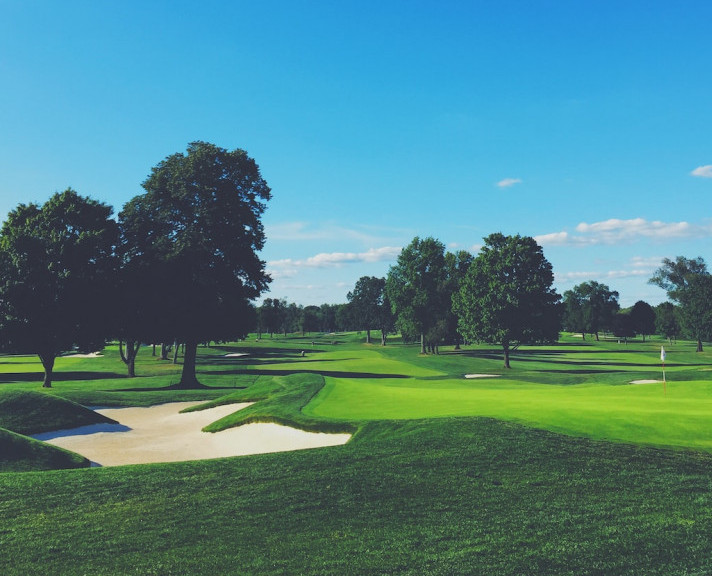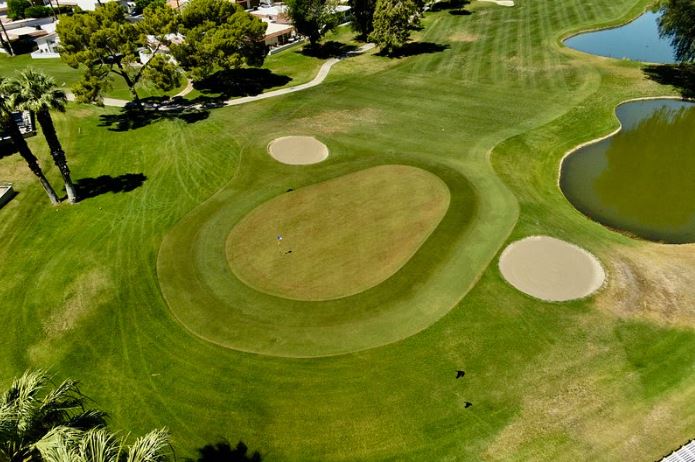If you are an experienced golfer or have watched a lot of golf either on the TV or by attending a Championship like the Open Championship, you will probably be able to answer this question. However, if you are new to the game, you may be asking the question, what are the different types of golf courses?
There are several types of course but the two we will concentrate on here are really the main two, namely, Links and Parkland
Links Golf Courses
Links golf courses are a unique type of golf course that has been around for centuries, originating in Scotland and spreading across the world. These courses are often considered some of the most challenging, yet rewarding courses to play due to their unique characteristics and design.
Characteristics and Design
Links courses are typically located along the coastlines, and as such, they have sandy soil, and dunes and utlise natural hazards such as wind and thick rough to protect them. The terrain on these courses is relatively flat, with undulating fairways and greens, making it challenging for golfers to hit their shots precisely. Don’t be fooled by those undulations though, they can be pretty severe, taking your ball off into all kinds of trouble.
What does the word “links” actually mean? Well, it comes from the Scottish word “hlinc” meaning rising ground or ridge. That perfectly describes the character of a links course. They are full of rising (and falling) ground and ridges.
How does a Links Course protect itself?
As mentioned above, links courses are relatively flat but with severe undulations in the terrain. This means, unless you learn to use the undulations to your advantage, you will find yourself in all kinds of heavy rough, or deep pot bunkers.
This outcome is made all the more likely by the fact links courses drain so well, meaning the fairways and greens tend to be hard allowing the ball to bounce and run with abandon.
There are two other main hazards to avoid on a links course, firstly the normally deep rough which will be found quite close to the edge of the fairway, and secondly, the deep pot bunkers.
The rough is generally left in a natural state, hence it can look long and untidy. It is a natural feature befitting a natural course. Stay out of it!
The pot bunkers are generally small in area but very deep with steep rivetted faces. The surrounding fairway tends to gather your ball and funnel it in making those undulating fairways even more dangerous, even to a seemingly well struck shot.
If you do find yourself in one of these, take your medicine chip out onto the fairway and get started again from there. Trying to take on too much from one of these deep bunkers will almost certainly end in disaster and probably with your ball back to where it started.
There is an invisible hazard on a links course that can come and go without warning. That is the wind. It can suddenly become very windy, quite often at the turn of the tide. Even worse if you are out there during a storm.
When we watch The Open Championships the players are so good at avoiding the other hazards, that sometimes this is the only protection a course can have, but boy can it create havoc.
How to survive on a Links Course?
Given there are hazards that should definitely be avoided and undulating fairways that are desperate to throw your ball into them, it is sensible to plot your way around a Links course. So, know where the hazards are and stay away from them.
When battling the wind, the advice is to keep the ball low. Take an extra club if you need to and play within yourself. Use the dry and hard fairways to gain distance rather than trying to blast it into the wind.
One thing is for sure, a mishit shot, carrying on the wind, will travel far further offline than you would ever have imagined. Don’t forget those hazards we talked about.
Famous Links Courses
There are far too many to mention but the majority are to be found in the UK and particularly in Scotland
Probably the most famous of all is St Andrew in Scotland. The home of golf.
Others include Royal Birkdale, Royal Troon, Muirfield, Carnoustie, Turnberry, Royal Liverpool (Hoylake), Royal Lytham and St Annes, Royal Portrush in Northern Ireland, and Royal St Georges in the South of England.
There are many other exceptional links courses around the world that could be a topic for a further post here.
Conclusion
Links courses are a unique type of golf course that offers a different playing experience to golfers. With their sandy terrain, undulating fairways and greens, deep bunkers, and fast greens, links courses are notoriously challenging. However, they also offer breathtaking views and a true test of a golfer’s skills. If you ever get the chance to play a links course, embrace the challenge and enjoy the experience, as it is one that you will never forget.
Parkland Courses
Parkland golf courses are a popular type of golf course that is known for their lush, manicured fairways and greens. These courses are often located inland and offer a contrast to the rugged, natural beauty of links courses. Parkland courses are designed to be challenging for golfers of all skill levels, with strategically placed hazards such as trees, water, and bunkers.
Characteristics and Design
Unlike links courses where the natural terrain is used as the canvass for course design, parkland courses are much more manufactured. The character and layout are designed in rather than using what is there in the first place.
How does a Parkland Course protect itself?
One of the defining characteristics of parkland golf courses is quite often the abundance of trees. Trees are used to create strategic challenges throughout the course, with fairways that dogleg around them, and greens that are guarded on either side. This requires golfers to have accuracy and precision in their shot-making to navigate around them whilst avoiding the other hazards.
Water hazards are another common feature of parkland courses. Lakes, ponds, and streams are strategically placed throughout the course to challenge golfers. They also add to the aesthetic beauty of the course.
Water hazards can be particularly challenging for golfers, as they require both distance and accuracy to carry the ball over the water and onto the green or fairway.
Bunkers tend to be larger and less deep than on a links course. They are strategically placed to catch errant drives and protect the greens. They can actually be quite beautiful to look at, however, it is advised to enjoy their beauty from the fairway rather than from within.
Another unique feature of parkland courses is their manicured fairways and greens. Unlike links courses, where the natural terrain is left largely untouched, parkland courses have well manicured grass, with greens that are often fast and true. This requires golfers to have a good touch and feel for the greens to be successful, as well as a solid short game.
Famous Parkland Courses
One of the most famous parkland golf courses in the world is Augusta National Golf Club in Georgia, USA. The home of The US Masters, which is held every year in April.
Augusta is known for its lush, green fairways, fast and undulating greens, and challenging layout. It is considered one of the most beautiful and challenging courses in the world.
Other famous parkland courses include Wentworth Club in England, which is a favourite of European golfers and has hosted the PGA Championship several times, Valderrama Golf Club in Spain, Le Golf National in France, and Loch Lomond in Scotland.
Conclusion
Parkland golf courses offer a unique playing experience to golfers, with their lush, manicured fairways, strategically placed hazards, and well structured greens. While they may not have the same natural beauty or challenges as links courses, they make up for it with stunning designs with the use of beautiful trees, lakes, rivers, and bunkers. They still require a high level of skill and precision to navigate successfully.
If you ever get the chance to play a parkland course, take the opportunity and enjoy the beauty and challenge that they offer.
What are your favourite links and parkland courses? Leave a comment below.

Enjoyed reading your descriptions of Links and Parkland courses Richard.
Whilst I love all courses, some of my favourites fall into another two categories – Woodland courses (Rosemount, Blairgowrie) and Heathland courses (Luffenham).
Maybe you’ll supply some information to your readers on these examples in the future?
Hi Martin,
Thanks for reading. I’m glad you enjoyed the post.
I certainly will look at covering Woodland and Heathland courses in the future.
I think maybe I shied away from Woodland courses in this article because of too many memories of being stuck behind trees.
Seriously, there is plenty here for another post and I will definitely be writing.
Cheers